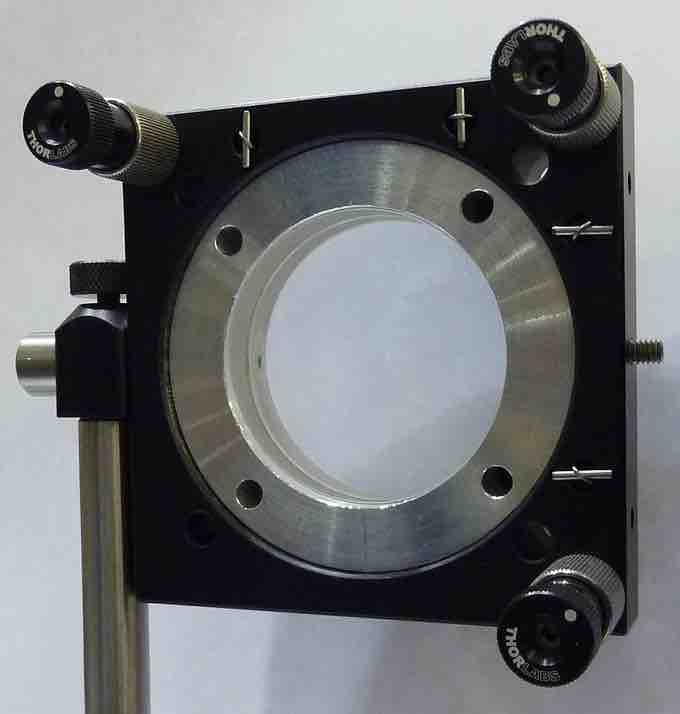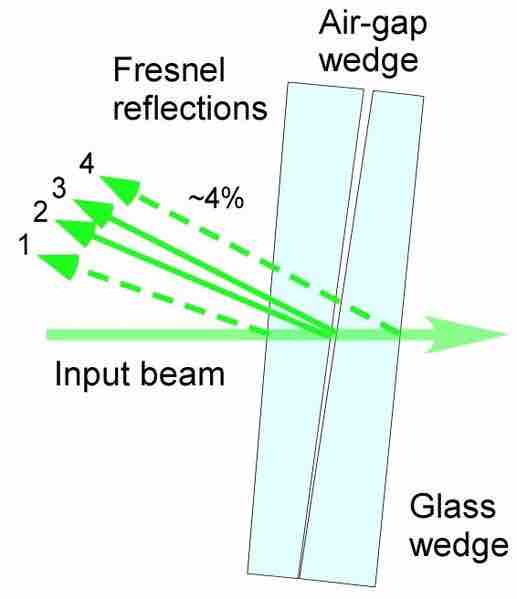Air Wedge
An air wedge is one of the simplest designs of shearing interferometers used to visualize the disturbance of the wave front after propagation through a test object. An air wedge can be used with nearly any light source, including non-coherent white light. The interferometer consists of two optical glass wedges (~2-5 degrees), pushed together and then slightly separated from one side to create a thin air-gap wedge. An example of an air wedge interferometer is shown in .

Air Wedge
Example of air wedge interferometer
The air gap between the two glass plates has two unique properties: it is very thin (micrometer scale) and has perfect flatness. Because of this extremely thin air-gap, the air wedge interferometer has been successfully used in experiments with femto-second high-power lasers.
An incident beam of light encounters four boundaries at which the index of refraction of the media changes, causing four reflected beams (or Fresnel reflections) as shown in . The first reflection occurs when the beam enters the first glass plate. The second reflection occurs when the beam exits the first plate and enters the air wedge, and the third reflection occurs when the beam exits the air wedge and enters the second glass plate. The fourth beam is reflected when it encounters the boundary of the second glass plate. The air wedge angle, between the second and third Fresnel reflections, can be adjusted, causing the reflected light beams to constructively and destructively interfere and create a fringe pattern. To minimize image aberrations of the resulting fringes, the angle plane of the glass wedges has to be placed orthogonal to the angle plane of the air-wedge.

Light Reflections Inside an Air Wedge Interferometer
Beam path inside of air wedge interferometer